A new resume to stand outYou’ve never had a résumé before. Maybe you’ve never needed one. But now you do. And you don’t know where to start. The primary purpose of the résumé is to get you the opportunity to interview for the job. Everything you do — and include — should focus on this goal. Your résumé should be targeted to be effective. If you don’t know what you want, it’s going to be difficult for the reader to know. The first step is to determine what skills, experience, and education are needed for your target job. The late résumé guru Yana Parker used to say, “A résumé without a job target is like a book without a title.” Understand that your résumé is not a “cut-and-dried job report.” It will not — and should not — include everything you’ve ever done in your career. It still needs to be accurate, but you don’t need to list every job you’ve ever held. Nor do you have to list every aspect of the responsibilities that you held. Your job descriptions on your résumé should not be extremely detailed because your résumé is not a Training Manual for other people to learn how to do your job. Your résumé should only give your audience an idea about "your results". If they are interested in details pertaining to "how" you produced those results, they will ask you in the interview. So, please learn to make the distinction between an actual "job description" and effective "resume content". Your résumé is not a legal document, unlike a job application that asks you to list all your career experience and that you sign, acknowledging that the information is accurate and complete. Instead, your résumé is a marketing document. The most important thing to remember is: The résumé is not about what you want — it’s what you can offer to an employer. In her book, “Résumé Magic,” author Susan Britton Whitcomb explains there are 10 main reasons that motivate employers to hire. These include your ability to help the company:
Everything you put in the résumé — or don’t put in the résumé — should relate to the job that you’re seeking, demonstrating to the person with the authority to hire you for that job what you can do for the company in that position. When trying to decide whether or not something is relevant, think about the Hiring Manager. Technology has changed the hiring process in some ways, but the essence is still the same: How can you attract the attention of the person who has the power to hire you and get the opportunity to get in front of him or her and demonstrate you’re the right fit for the job? If you are submitting your résumé online, it’s very likely that your résumé will go into an applicant tracking system, which is software that helps hiring managers track applications and select which candidates to interview. Applicant tracking systems — and the integration of technology into the application process — underscore the importance of tailoring your résumé and cover letter for the role you’re seeking. If there are specific words and phrases used in the job announcement, make sure those are included in your résumé. You can’t simply create a résumé and use it to apply to 100 different jobs. Not only is that inefficient, but it’s ineffective. Résumés are not “one size fits all.” You can’t expect a résumé focused on one type of role to open doors for you in another career field. A résumé written for a job as a Middle School Principal is not likely to generate interviews for a role as a Sales Professional. Nor is a résumé written for a Social Media Specialist going to work for someone applying as an Executive Assistant. There may be aspects of the résumé that you can use in both versions of the résumé, but you can’t use the same document. Nor can you copy someone else’s résumé — even if it’s incredible — and expect it to work for you in landing your dream job. Even if the résumé lands you an interview, you need to be able to speak to the experience and accomplishments described. You not only have to walk the walk, you have to talk the talk. Tell a story with your résumé. How did what you’ve done in the past lead you to the right combination of skills, experience, and education for the job you want? Who are you? What sets you apart? What can you do for the company that no one else does? If you are a recent graduate with little to no work experience in the field you’ve studied and are targeting, your strongest qualifications are your just-completed education and any internships, projects, or relevant volunteer experience. Resume Tips 2020
Job Offer Acceptance EmailThere is not precise name for this letter in the same way there is a precise name for cover letters. I have seen people refer to and search for a job offer acceptance email using a variety of terms. So, a job offer acceptance email is also referred to as:
Accepting A Job Offer EmailThank You Email Sample 1 RE: [Job Title] – Offer Acceptance Dear [Recipient’s Name], Thank you for extending this job offer to me. It is my pleasure to accept this offer and to join [company name]. Please consider this email as my formal acceptance of the offer for the position of [job title]. I am excited about this opportunity and look forward to implementing my expertise and adding value where necessary. It is my understanding that my annual starting salary will be [salary amount] with benefits offered after my first 90 days of employment, as discussed in our prior written communication. I am eager to meet and join everyone else on [date]. In the meantime, please do not hesitate to contact me if I may be of any assistance. I may be reached at (555) 239-8083 or by email at [email protected]. Thank you again for this opportunity. Sincerely, [Your name] Email Accepting Job OfferThank You Email Sample 2 Subject: Job Offer Acceptance from your name and last name Dear [Recipient’s Name], This is to reaffirm my decision to join [company name] and to formally accept this job offer for the position of [job title]. I would also like to thank you for this opportunity. Per your request, you will find enclosed my signed copy of the [contract, employee agreement, etc.] I have fully read the content and I confirm that my starting salary will be [salary amount] and my starting date will be on [date]. I am eager to start on [start date]. In the meantime, please do not hesitate to contact me if I may be of assistance. I look forward to joining the team. Best regards, [Your name] Job Offer Acceptance LetterThank You Letter Sample [Date] [Contact Name] [Title] [Company Name] [Address] [City, State Zip] Dear [Contact Name]: Thank you for the opportunity to accept a position as [Job Title] with [Company Name]. I am happy to accept your offer, with an anticipated starting date of [date]. I am pleased to accept the starting salary of [$$], and the additional benefits of [list them specifically]. I will be at the [location name] on [start date] at [hour, time] and I am eager to begin my new role. Please let me know if I may be of service in the meantime. I may be reached at [000] 000-0000 or via email at [email address]. Thank you again. Sincerely, Your name Your email address Your LinkedIn Profile Address Enclosure: Resume
Critical Thinking DefinitionDefinition of Critical Thinking
It is important to have a clear understanding of the definition of critical thinking and how we can use it as a problem-solving skill. A Critical Thinking Definition by Wikipedia is as follows: "Critical thinking is the analysis of facts to form a judgment."
Definition of Creative Thinking
Another strategy available to us and one I’m sure you’ve heard about is creative thinking. The Business Dictionary's definition of creative thinking is as follows: "A way of looking at problems or situations from a fresh perspective that suggests unorthodox solutions (which may look unsettling at first). Creative thinking can be stimulated both by an unstructured process such as brainstorming, and by a structured process such as lateral thinking.
Critical vs Creative Thinking
We’re told to think outside the box and get creative. That's a polar opposite to the very logical approach of critical thinking. I thought it would be interesting to take a look at these two thinking styles, how they differ. Then I'll wrap things up by sharing how you can supercharge your problem-solving skills by combining the two.
Critical thinking, as we’ve already established, is a very logical approach to problem-solving. You determine what the problem is, gather as much data as needed, analyze it, and then come up with the best possible logical solution. You then apply the solution and determine if it’s a good fit or not. If it's not a good fit, you go back to collecting and analyzing more data. You continue the process until you find the best possible solution, considering alternatives and weighing up options as you go. Creative thinking as the name implies is a much more creative and less logical way of approaching a problem. You think outside the box, looking for unexpected alternatives and different approaches to examine. Almost nothing is too far out or crazy to try and you may consider unorthodox approaches. You skip right over the obvious solutions, data, and information. There is no logical approach to the problem-solving. Instead, it’s a free-form experimentation and seeing where that leads you. You can see that the two processes are very different. While problem-solving may seem like a situation where you would want to choose one way of thinking over the other, it serves you well to use both of them. How you combine them is up to you. It’s important, however, to remember that our brains have a hard time switching from logical thinking to creative thinking back and forth. It’s best to start with one, take a break, and then move to the other. For example, you could start with creative thinking to come up with all sorts of different possible solutions and approaches and then use critical thinking to start to sort through the ideas and find the most likely candidates. Or you could start with critical thinking and then move to creative thinking when you’re stuck or when you are in need of more ideas and/or data points to consider. Try it either way and see which method works best for you. Creativity Skills
Many people don’t think of creativity as a skill. But, it is, and you can develop it. Some people will separate creativity from thinking, but others believe it is the same concept. After all, you need to use your brain to be creative. Therefore, thinking is involved.
When you sharpen your creative skills, you expand your opportunities in most aspects of your life. At work, you will be called upon to come up with new ideas that your company use to create products or sell services. In your personal life, you may help your kids when they are stuck on coming up with ideas for their projects. You can probably come up with a host of places where creativity comes in handy. Companies like creativity, but only to a certain point. Managers may pretend as though they want creative people. But, often that requires setting them loose in an environment that allows them to come up with new ideas. That gives the managers less control over their people and many won’t like that proposition. While some managers allow for this, most will not. They become a constraint on the creative process. If you run your own business, then you can let your creativity run wild. Of course, even here, you need to strike a balance between coming up with ideas and getting work done. Your ideas are meaningless unless put into action. It’s great to have new ideas, but you have to put them in the pipeline to let them take off. Brainstorming
Part of the creative process is to come up with bad ideas. That sounds counterintuitive, and the thinking behind it is not to deliberately come up with bad ideas. But, you should allow them to occur. It’s better to have hundreds of ideas which could yield a few great ideas than it is to try and think the best ideas out of thin air.
Brainstorming sessions nurture the concept of allowing for bad ideas to occur. The first stage of a brainstorming session has a rule that the participants are not allowed to criticize any presented idea. The moderator must be vigilant with this rule. After the first session is complete, the group then revisits each idea, and the critiquing may begin. Usually, at the end of the session, the group is left with a few ideas that are right for their situation. There are no hard and fast rules for what makes someone creative. Mostly, you draw your inspiration from others and rework a new angle into the process. Brainstorming Methods
The following are some of the alternative methods that organizations use in their brainstorming sessions. Not every method will be right for every group and it may take some experimenting to see which ones to incorporate and which ones to leave behind.
MIND MAPS Mind maps are often used in conjunction with standard brainstorming activities, but not always. A mind map gives you a way of organizing thoughts and ideas as a series of bubbles or nodes. Each node is considered an idea and it is important if the node is connected to another node. Many people feel that using mind maps works because it is the method our brain uses. There are people that are not comfortable with their use and it will not serve them very well if this is the case. BRAIN WRITING One disadvantage of standard brainstorming techniques is a few of the members tend to monopolize the conversation. This stifles the ideas of the rest and it leaves the team with less than optimal ideas. One way around this is to have each member of the group write down their thoughts and ideas before even arriving at the meeting. While at the meeting, each member writes down the ideas on a common area like a whiteboard or something like it. The group discusses the ideas at length. This gives all members an opportunity to have their ideas count and prevents or reduces the stronger personalities from dominating the process. There will be common ideas with this approach but these can be combined and duplicates removed. There is a variation on this concept of brain writing, more in implementation rather than form. Team members gather in a circle (after individually writing down all ideas) and read aloud one idea in a round robin fashion. The team discusses each idea as they are read. This can generate other ideas as well as questions. All of these conversations should be recorded. This session can also be used to remove the weaker ideas or ones that don’t seem to fit the objectives. PROJECTION This actually takes on various forms and includes such concepts as time travel, teleportation, important figures, etc. Each are a form of role playing and essentially you are transforming yourself into someone else with the objective being what you would do if you were in a particular person’s position. It could be a person 100 years ago, or it could be a famous person. Some forms even go as far as imagining you are a different gender.
There are many other forms of brainstorming which serves to add to the confusion. It may be wise to start with a traditional form and with practice, incorporate others into the mix and see how effective this is for the objectives of the group.
What Does CV Stand ForCV stands for "Curriculum Vitae" which is a Latin word. What Does CV Mean?"Curriculum Vitae" means "Course of Life". Resume vs CVA CV is a collection of documents that describe your education and professional history, focusing on your accomplishments and showcasing a higher level of detail than a resume. People most typically using CV as a form of application are seeking positions in education, entrance into graduate and post-graduate programs, or research, and they are required to discuss their professional philosophies. A resume is limited to a maximum of two pages in length. However, a CV is a collection of content and is not limited in the number of pages used (four or five pages are considered average, but given the experience and accomplishments, the length can vary). CURRICULUM VITAE A CV and a resume are similar in context, but a CV has a more noticeable focus on scholastic achievements and professional accomplishments and accolades. Unlike your resume, a CV would contain information on scholarships you may have received, essays, or research you have completed and published, grants you received, community and volunteer work, teaching philosophy, etc. You will begin by listing your career objective in a summarized form to showcase your commitment to your goals, and the actions you are willing to take to achieve those goals. Whatever your career, start your CV with a brief outline of your career philosophy and your professional goals. Focus on goals that are aligned with the philosophy you have introduced. Immediately following your goals, list your achievements, highlighting your education first. Here, you can mention your thesis project or dissertation, courses that support your career objective, publications & research (in progress or completed), certifications, studies abroad, languages, etc. Your experience should be included next, focusing on the work history that supports your career objective. This should conclude your CV. RESUME A resume is a concise document that outlines your experience, results, and academic background. Your contact information (name, location, email, phone number, LinkedIn) should be listed at the top of your resume. It should not contain personal information that discloses ethnicity, sexual orientation, marital status, age, living situations, or any other personal information that is not directly related to your career. You must have an opening section. Be it a Title, a Summary, or an Objective section, we need an opening. Do not begin listing your work experience right after your contact information. A brief starting section for the resume should give your potential employers an idea of how you wish to move forward in your professional life. A concise profile or opening section should discuss who you are and how your skills and experience best apply to the job you are interested in. Personal profile/summary should only contain a few well-written sentences that convey what you can bring to the table in terms of the specific job. Use this section to attract the employers’ attention, but don’t go overboard in trying to be creative; stay professional. Next, you should list your work experience in reverse chronological order. Leave your education for the end, unless you graduated less than two years ago. Your experience listing should include information on one to five jobs you've held, starting with your current or last job, and listing previous positions thereafter. Your education should include college, graduate & post-graduate work, as well as any courses or professional certifications that are relevant to your career development. Achievements, volunteer positions, publications, and affiliations should only be listed if they apply to your professional work experience. CONCLUSION If you are unsure which form of application to use, do the appropriate research, and create a resume or CV that best fits the format commonly accepted in your industry. If you need help, start here. Frequently Asked QuestionsWhat Does CV Stand For?
CV stands for "Curriculum Vitae" which is a Latin word.
What Does CV Mean?
"Curriculum Vitae" means "Course of Life".
What Is The Difference Between A Resume And A CV?
A CV and a resume are similar in context, but a CV is significantly more detailed, has a more noticeable focus on scholastic achievements and professional accomplishments and accolades. It even inclused one's professional and/or academic philosophy.
What does a perfect resume look like?Great Resume SkillsMany people are actively in search of a new job. If you are looking to find a new job, the quality of your resume can make all the difference. Careful presentation and clean formatting can make it easier for you to write the perfect resume and it may just help you land your dream job faster. Here are some quick resume tips to get you started: 2020 Resume TipsTARGETING. Your resume and cover letter must reflect your objective. This means placing the relevant data in a section where it will be noticed even when speedreading.
SUMMARIZE IT. The idea is to provide as much information as needed using as few words as possible. Proper bragging is ok, but please do not fill your resume with fluff or industry jargon. Chances are your potential employer won't have a lot of time to read every detail, so stay focused on what matters. SHOWCASE YOUR SKILLS. Don't create a long list with any and every skill you have. The key is to be brief and to the point. Find the proper terms to describe your skills (the ones most in-demand). Use those terms in your resume to create a flow. This resume building tip alone can greatly help your resume stand out and improve your chances of getting noticed. KEYWORDS. Have you included the relevant keywords? Review your resume and include the job title you are seeking along with the keywords that best describe your target position.
DON’T GET TOO CREATIVE. A little style is fine, but when you get into intricate designs or colored textured paper, you are breaking the rules. The key is balance. Try to stand out while you respect the rules, not otherwise. For example, if you are a Graphic Designer, it doesn't mean you must have a resume that contains too many elements of graphic design. If you are a pet Veterinarian, it does not mean that you must have cartoon images of cats and dogs on your resume. Such actions may work against your goal of getting hired. In other words, some hiring managers may suspect that perhaps based on the appearance of your resume, you may not be too interested in learning the right way of doing things. START WITH ACTION VERBS. Start your sentences with action verbs. Be mindful of the tense you are using. If a project is listed under your current job and yet it is something that you completed in the past, please feel free to use the past tense when using action verbs, even if the project is listed under your present job.
BULLET POINTS. Don't ever underestimate the power of bullet points in a resume. Stay away from writing long paragraphs. The bullet points should not be longer than two (2) to two and a half (2.5) lines. A bullet point with five (5) lines is no longer a bullet point. It's a paragraph. Keep in mind that your job is to help employers find the details they are looking for quickly. TWO PAGES AND NOT LONGER. Perhaps you feel the need to explain the details. Please do not be tempted to include more detail than necessary. Also, do not clutter your document. Here is an important rule: In a resume, white space is your friend. Try to have enough white space.
USING TEMPLATES. Think twice about using templates. A template may be useful when you are looking for ideas or trying to figure out what a resume should look like. However, stay away from using the template as your own resume, because that design is never exclusive to you. It is a template that others are using as well.
CREATE AN ERROR-FREE DOCUMENT. Please review your resume carefully. Every expert will advise you not to submit a resume with errors. Check the grammar thoroughly and avoid typing errors. If you want to land your dream job, learn to revive your network, brand yourself, and make your resume stand out. The only thing you have to do next is to ace the video interview and you will be well on your way!
How to ace an online video interviewAll About Video Interviews
There are two types of video interviews — live interviews (using Skype, FaceTime, or LiveMessenger) and recorded Question-and-Answer interviews, also called “time-shifted” video interviews.
In a recorded interview, the jobseeker is directed to a website to answer questions on video, using their computer’s webcam. Video interviews provide an apples-to-apples approach to assessing candidates. All applicants are asked the same questions, and the hiring manager can review and rate the responses. These interviews can be easily set up by the company’s HR staff and the recording forwarded to the hiring manager for selection for the next round of interviews.
More common, however, are live video interviews.
In 2012, Robert Half reported in a press release that a survey by OfficeTeam found that 63 percent of HR managers use video technology to conduct job interviews. This was a significant increase from 14 percent who conducted Skype interviews in 2011. Skype usage has increased dramatically in recent years: more than 300 million minutes of video calls are logged every day. An increasing number of those calls are job interviews. In 2018, CNBC reported that job interviews are more commonly conducted by AI robots and included this video to show how AI is changing the way you apply for jobs:
On September 20th, 2018, The Wall Street Journal provided details in an episode of Moving Upstream and included this video to show "how new data science tools are determining who gets hired".
Virtual Interview Preparation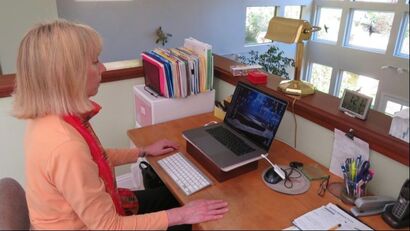 Prepare as if you were sitting across the desk from the interviewer Prepare as if you were sitting across the desk from the interviewer
You can practice a video interview on a computer with a webcam, using the Skype app, or using traditional camera equipment .
Even though online interviews are being conducted by webcam, they are “real” live interviews, and you should be as prepared as if you were sitting across the desk from the interviewer. In fact, you may have to prepare more! After all, you do not have to clean your room before going off to an in-person job interview, but you do need to clear a space for your online interview. In a 2017 article about "How to prepare for a job interview", CNBC reminds us to be carefull about our vocabulary and warns us against our use of "filler words". Each job board also offers its own advice about video interviews.
Also, here is a compilation of various HR professionals and their insights on virtual interviews:
Be mindful of where you set up for your video interview. Be sure the area is free of visual distractions (clutter). Carefully consider what is in the background of your AI interview. Make the background interesting, but not distracting. Plain white walls are fine, but boring. Can you frame a desk or bookshelves behind you instead?
Check out your technology well in advance of the interview. Make sure you have Internet connectivity Make sure your webcam and microphone are working and that your webcam is providing a decent picture. (High definition webcams are available for under $100, if yours is not providing a clear picture.) You may also have to download the software if it is the first time you are using the application. 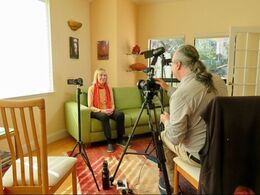 Practice with friends and family Practice with friends and family
One of the best things you can do to prepare for a live video interview is practice. Practice filming a couple of interviews with friends or family members before your job interview. Check the lighting and your volume.
As with a phone interview, recording your practice video interview can help you identify areas to work on, or fix. Have your test partner take a few videos. Be sure to account for any time zone differences before the interview. Video Interview Do's and Don'ts
Review the guidelines for phone interviews, but also keep these “do’s” and “don’ts” in mind.
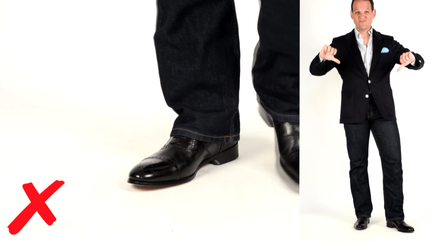 Wrong attire for men by Genetleman's Gazette Wrong attire for men by Genetleman's Gazette
DO:
Dress nicely — more than one jobseeker has scheduled a video interview, thinking it would be voice only — and then accidentally found himself or herself on a video call. Dress from head-to-toe. You may think you do not need to wear dress pants with the shirt and tie since the interviewer is only going to see the top half of your outfit. But you should always expect the unexpected. You never know when you might need to stand during an interview. Pajama pants, jeans, or shorts with a dress shirt, tie, and jacket just do not work. Keep your clothing color choice in mind. Check how the colors of your clothing appear on camera. Just like TV news anchors avoid some colors — and most small patterns, pick colors that will show up well on video. Jewel tones or pastel colors work best. Do not wear white or black. Practice your video interview wearing the exact outfit you are planning to wear. This trial run will also allow you to test the volume of your system, see how the interview software works (if you are not familiar with it), and make sure your lighting is appropriate. 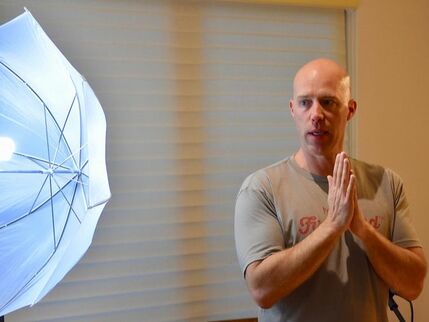 Lighting is very important for video interviews Lighting is very important for video interviews
Lighting is important for virtual interviews. If the light source is behind you, you may appear as a dark silhouette on the screen. Position a lamp or other light source in front of you.
Ensure that your profile photo is professional. This is your first impression from a physical standpoint in a video conference. Positioning is also important. Prop up the computer so that you are not looking down at it and practice where to sit so you are framed correctly by the webcam. Make sure your torso is visible — including your hands — especially if you “talk” with your hands. Look at the webcam when you speak because it will appear to the interviewer that you are looking at them directly.  How to practice for video job interviews How to practice for video job interviews
One “pro” tip is to use a USB-connected headset for an interview instead of using the computer’s speakers. Headsets are inexpensive and can provide a much clearer interview experience. If possible, use a wired Internet connection (plug directly into the Ethernet port) instead of using a wireless connection. If you are using a laptop for the online interview session, plug it in so you have plenty of “juice” (battery life) for the call. You do not want to have to dig for a cord to keep the computer from shutting down. Turn off notifications on your computer and close your other software programs. You do not want to be distracted by beeps every time you receive an email. Speaking of distractions, it is easy to tell on a video interview if you are not paying attention, so keep your focus on the interviewer. Dial up the enthusiasm! Someone who speaks with normal energy in a one-on-one conversation can come across as flat and monotone on a video interview. So it is important to be a little more enthusiastic in a virtual interview than in-person. Smiling is an important strategy for video interviews. Most of the time, when we are listening to someone else, we have a blank expression on our face. But on a video interview, a blank expression comes across as a frown. Keep a slight smile on your face: not a huge grin, just show a few teeth and raise your cheeks slightly. Practice this in a mirror ahead of time. Lean in. You have probably heard that “the camera adds 10 pounds.” The reason for this is that many people lean backwards in their chair, when they should be leaning forward. If you sit back and relax in your chair your head will be further away from the webcam than your stomach. Unfortunately, the camera latches on to whatever is closest…your gut! For women, pay careful attention to your hair and makeup in video interviews. Again, a practice interview session can help you assess this. You may even hire Interview Coaching services. Be mindful of your habits. Just like in a face-to-face interview, the interviewer will notice when you twirl your hair or chew your lip. You can take notes during an online interview, but do not take too many, or you will come off looking distracted. Take notes with a pen and paper, not on your computer. If you have an online portfolio, keep the link handy. You may want to share it with your interviewer.
DO NOT:
What to do at the end of the interview
As with an in-person interview, be sure to inquire about what the next step will be. And write a handwritten thank you note or email as soon as you are off the call.
Job seekers often ask about when to follow up after interview. Follow-up is key after a phone or video interview. Research indicates that employers are less likely to keep jobseekers up-to-date about their prospects with the company after a phone interview than with an in-person interview.
Checklist for a virtual interview
► ► BE ORGANIZED ◄◄
 ►► Be organized ◄◄ ►► Be organized ◄◄
|
Categories
All
powered by Surfing Waves
AuthorMandy Fard is a Certified Professional Resume Writer (CPRW, CMRW) and Recruiter with decades of experience in assisting job seekers, working directly with employers in multiple industries, and writing proven-effective resumes. Archives
July 2024
|
-
Greater Los Angeles
and Kern County
-
[email protected]
.

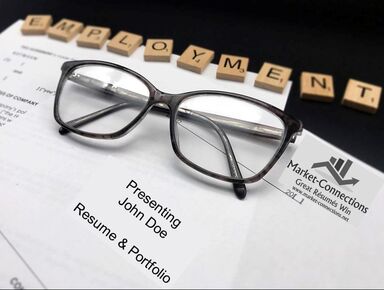


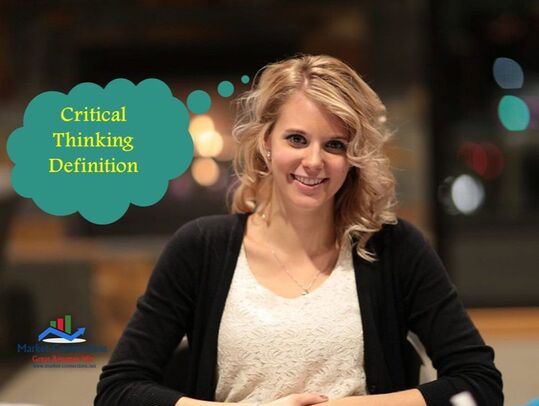



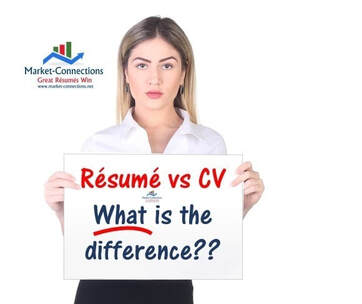
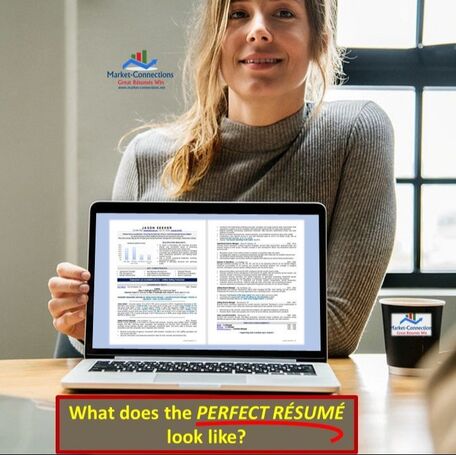


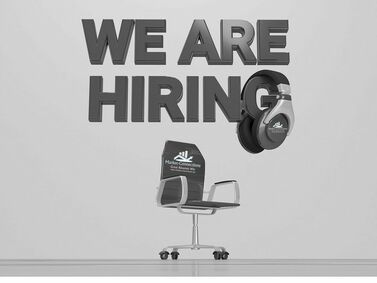
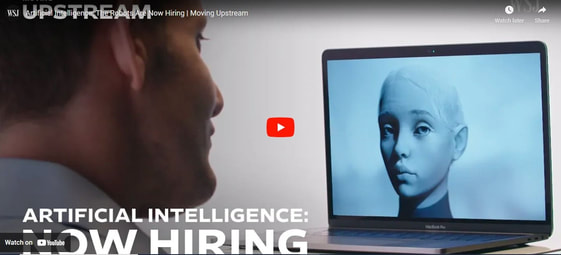

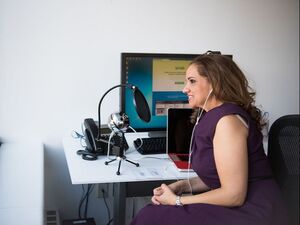


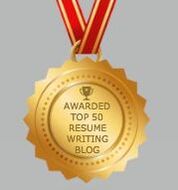

 RSS Feed
RSS Feed



